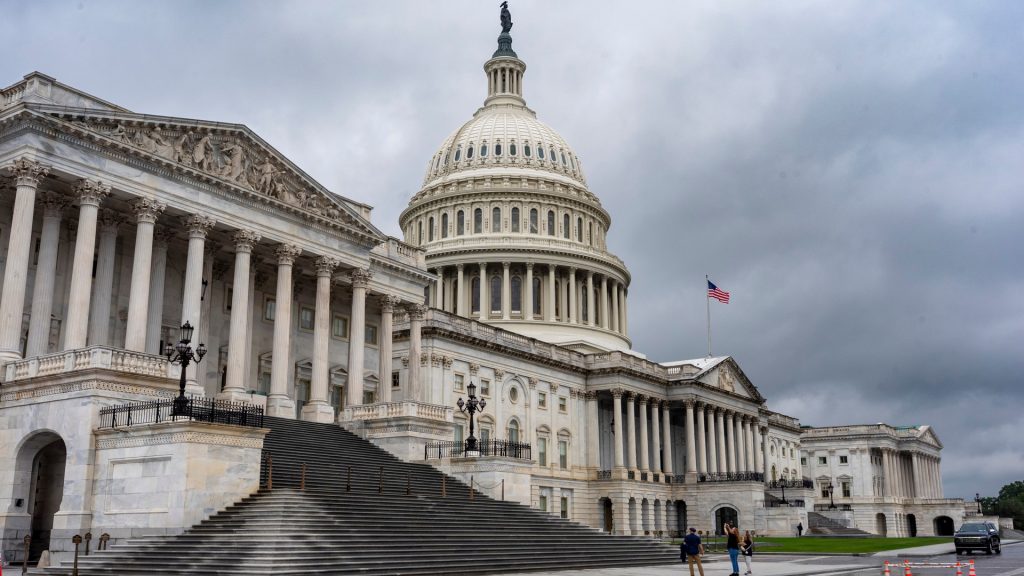How a government shutdown could affect Americans

With the federal government just one day away from a potential shutdown, thousands of workers could be furloughed or even fired. A shutdown could disrupt or even halt operations at several agencies across the country.
These disruptions could impact not only federal workers but also the general public.
Congress has until midnight on Tuesday to come to an agreement. Otherwise, government spending will run out, forcing a shutdown. While it’s possible Congress could still avoid a shutdown, President Donald Trump expressed doubt. On Sunday, he said he doesn’t see “how we’re going to solve this issue” before Tuesday.
What’s the holdup?
The potential shutdown comes as negotiations in Congress remain at a stalemate. Democrats are insisting on a bipartisan bill that includes health care funding. However, Republicans aren’t budging.
Specifically, Democrats are demanding that Republicans agree to reverse Medicaid cuts, restore public media funding and continue subsidies for Affordable Care Act plans.
While speaking with reporters on Monday, House Minority Leader Hakeem Jeffries addressed the shutdown and Democrats’ demands.

“What we will not do is support a partisan Republican spending bill that continues to gut the health care of the American people,” Jeffries told reporters in the Capitol. “This is a five-alarm fire in terms of the Republican-caused health care crisis. And that’s why Democrats are determined to turn things around.”
House Speaker Mike Johnson, R-La., said Republicans are willing to work with Democrats on the condition that they must be willing to spend less money than last year.

What agencies could be affected?
Should the government shut down Tuesday night, Social Security and Medicare benefits would continue as normal. However, some services within Medicare could face lapses. For instance, the federal government may not be able to issue replacement Medicare cards, according to The New York Times.
The Supplemental Nutrition Assistance Program (SNAP) would also not be immediately interrupted. However, payments could be affected later in the year, depending on how long the government remains shut down.
Should the shutdown extend into mid-October, the U.S. Department of Agriculture could potentially tap its contingency reserve funding to cover future SNAP costs.
The Department of Education shared its plan for a potential shutdown with Straight Arrow News. It indicated a total of 1,485 employees would likely be furloughed during a shutdown.
The plan notes that the department would cease any new grantmaking activities. However, there would be a limited impact given that “the majority of the Department’s grant programs typically make awards over the summer.”
The plan also notes that the department’s “development and implementation of guidance, technical assistance, and regulatory actions would also pause during a lapse.”
It’s difficult to predict which agencies and programs would end altogether, as administrations tend to have some leeway in that area.
However, earlier this month, the White House budget office warned federal agencies to prepare for firings, not furloughs, should the government shut down.
The Office of Management and Budget sent out a memo, directing agencies to prepare for mass layoffs in programs that are “not consistent with the president’s priorities.”
Shutdown practices in the past
While it’s difficult to predict the full implications of a potential shutdown, history provides a glimpse into what a 2025 shutdown could mean for certain agencies.
In past shutdowns, the Environmental Protection Agency furloughed employees responsible for monitoring pollution and ensuring compliance. This resulted in disruptions to facility inspections across the country.
When it comes to National Parks, the National Park Service has a general rule of keeping facilities that are typically accessible open to the public. If an area is inaccessible during non-park hours, it is typically locked for the duration of the shutdown.
Unbiased. Straight Facts.TM
The longest U.S. government shutdown lasted 35 days, from Dec. 22, 2018, to Jan. 25, 2019, during President Trump’s first term.

Previously, shutdowns have also led to the Smithsonian Institution closing its national zoo, museums and Conservation Biology Institute.
The Food & Drug Administration has also felt the effects of shutdowns in the past. The agency previously shifted to an emergency response-style workforce. Meaning, it would only address imminent threats to human life and food safety emergencies.
Military paychecks could also be delayed, and services for troops and their families could be affected. Previously, paychecks for active service men and women halted until a new funding deal was reached. However, military personnel are still required to continue to report for duty.
Straight Arrow News has contacted these agencies for a statement and is waiting for their responses.
What would remain operational?
Even if the government shuts down, FBI investigators, CIA officers, air traffic controllers and agents manning airport checkpoints would continue to work.
Veteran healthcare facilities and VA benefits would also likely remain unaffected.
The general public would continue to receive mail, as the U.S. Postal Service is an independent entity that is funded through sales of products and services, not tax dollars.
The post How a government shutdown could affect Americans appeared first on Straight Arrow News.





